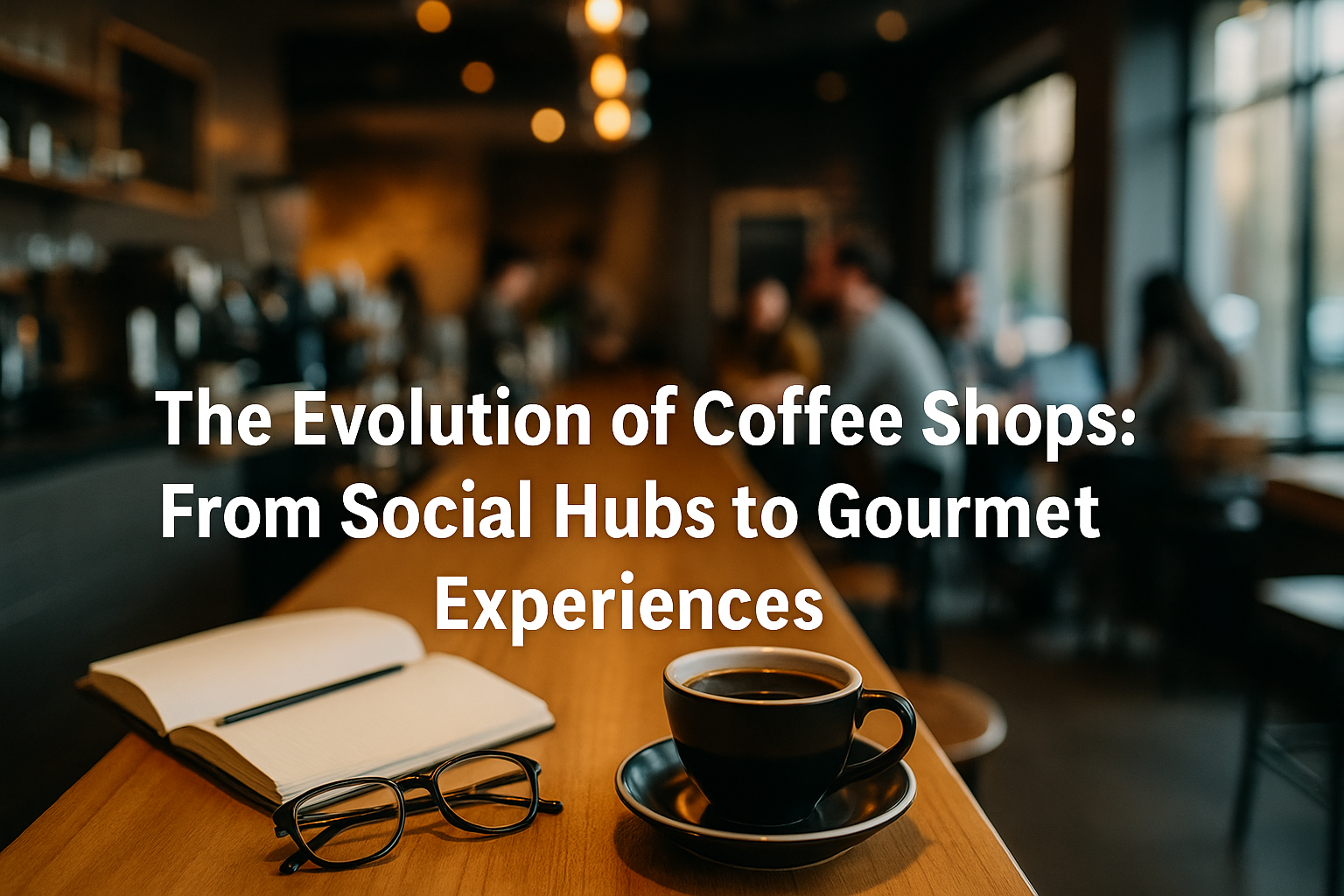Coffee shops have evolved remarkably over centuries—from modest social gathering spaces to sophisticated gourmet destinations. This article explores the history, cultural impact, and modern transformations of coffee shops around the world.
Origins: Coffeehouses in the Middle East
The first coffeehouses, known as qahveh khaneh, emerged in 15th-century Persia. These venues were not just about coffee; they became important centers for:
- Social interaction
- Intellectual discourse
- Artistic performances
Coffeehouses soon spread across the Ottoman Empire, particularly in Istanbul, Cairo, and Mecca.
Coffeehouses Reach Europe
By the 17th century, coffeehouses opened across major European cities:
- Venice: First European coffeehouse in 1645.
- Oxford: The Angel coffeehouse, opened in 1650.
- London: Became known for “Penny Universities” where intellectuals gathered.
These venues played a significant role in shaping public opinion and fostering Enlightenment ideas.
Coffee in the Americas
European colonization spread coffee cultivation to the Caribbean and South America. In parallel, coffeehouses appeared in cities such as New York and Boston, becoming popular meeting spots for politicians and businessmen.
The Rise of Specialty Coffee Shops
The 20th century saw the rise of chains like Starbucks, making coffee accessible globally. Simultaneously, the Third Wave Coffee Movement emphasized:
- High-quality, single-origin beans
- Direct trade with farmers
- Precision brewing methods
This transformed coffee shops into places for gourmet experiences.
Modern Coffee Culture
Today’s coffee shops serve as:
- Workspaces: Thanks to free Wi-Fi and relaxed atmospheres.
- Community hubs: Hosting events, live music, and art exhibitions.
- Culinary destinations: Offering craft pastries, alternative brews, and plant-based options.
The Aesthetic of Coffee Shops
Design has become central to modern coffee shops, focusing on:
- Minimalist interiors
- Sustainable materials
- Instagram-friendly decor
Future Trends
- Sustainability: Emphasis on eco-friendly practices.
- Technology: Mobile ordering and digital loyalty programs.
- Inclusivity: More non-caffeinated and dietary-inclusive menu options.
Final Thoughts
From social hubs of the 15th century to the curated experiences of today, coffee shops continue to reflect and shape cultural trends. Whether as a place for deep conversations or a haven for coffee connoisseurs, they remain integral to urban life around the world.
